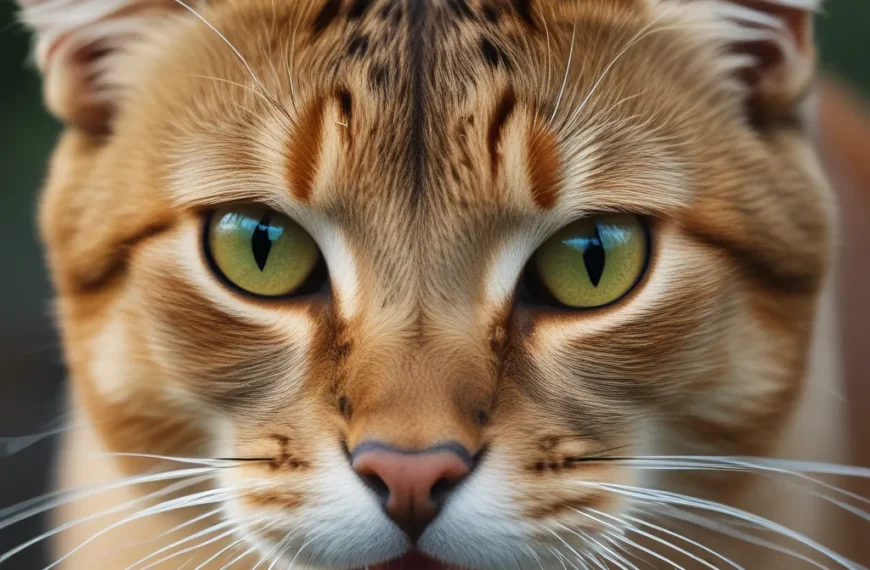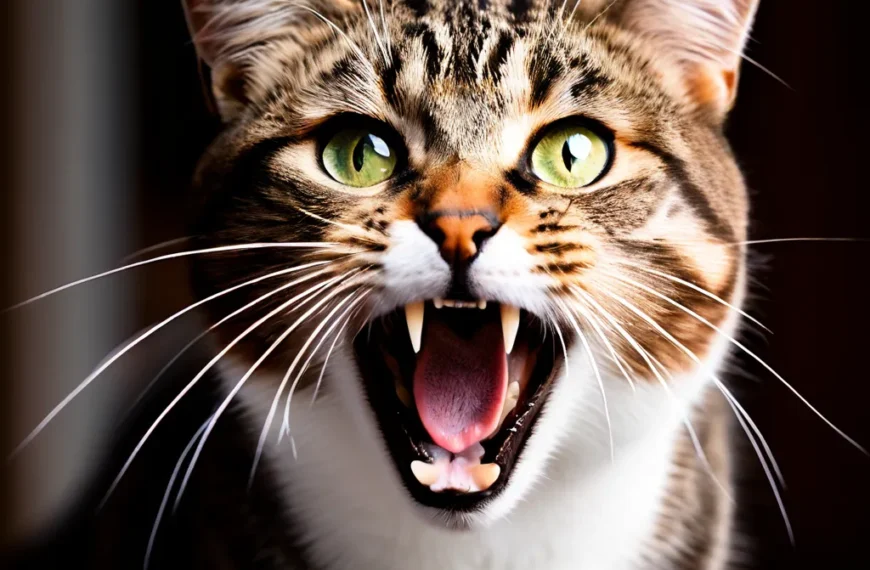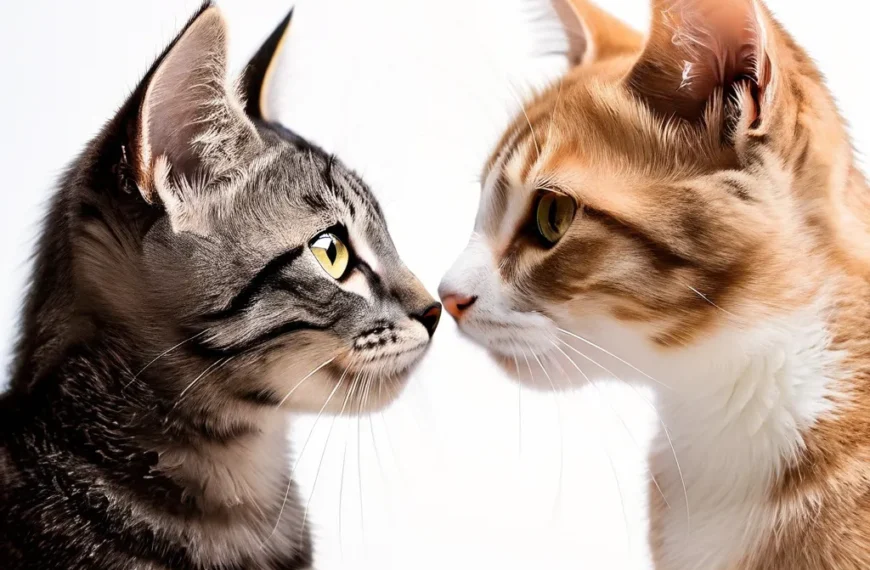Introduction
Cats are known for their independence and aloofness, but beneath their tough exterior, they are capable of experiencing a range of emotions, including sadness. While they may not demonstrate their feelings in the same way as humans do, cats can exhibit subtle behaviors and physical changes that indicate they are feeling down.
Recognizing these signs of sadness in cats is crucial for providing them with the care and support they need to thrive. Unfortunately, many cat owners often mistake their pet’s sadness for simply being “lazy” or “bored,” which can lead to delayed or inadequate attention to their emotional and physical needs.
In this article, we will delve into the world of feline emotions and explore the various ways that cats show sadness. By understanding these signs and symptoms, you can take the first step towards creating a happier, healthier life for your beloved cat. So, let’s start by exploring the often-overlooked world of feline sadness and what it looks like.
How do cats show sadness? Cats can exhibit a range of behaviors that indicate they are feeling sad or depressed. These can include changes in appetite, sleep patterns, and social behavior. They may also exhibit physical symptoms such as lethargy, loss of interest in activities, and changes in grooming habits.

By recognizing these signs and symptoms, you can take the first step towards helping your cat feel better. In the following sections, we will explore the different ways that cats show sadness and provide tips on how to support your cat’s emotional and physical needs.
Recognizing the Signs of Sadness in Cats
Cats, being incredible communicative creatures, can sometimes show their sadness through their body language and behavior. Some common signs of sadness or depression in cats include:
- Loss of appetite: Cats experiencing sadness may lose their appetite and refuse to eat.
- Withdrawal: Sad cats may become withdrawn, hiding or avoiding social interactions.
- Aggression: Cats may act more aggressively or defensively when feeling threatened or sad.
- Instinctual rubbing and rolling: Cats may engage in sensual rubbing or rolling on the ground to alleviate stress or sadness.
- Vocalization: Cats may make unusual noises, such as purring, chirping, or wailing, to express their sadness.
Various behavioral changes can serve as key indicators of sadness in cats, including:
- Loss of interest in play or toys: Cats may no longer engage with their usual favorite toys.
- Declining interactions with humans or other animals: Sad cats may avoid or withdraw from their usual social circles.
- Decreased grooming: Cats may stop grooming themselves or become less thorough in doing so.
Physical symptoms can support a diagnosis of sadness in cats. Some common physical signs include:
- Changes in their coat: Cats suffering from sadness may have an unkempt, matted, or dull coat.
- Sleeping more than usual: Cats may sleep excessively, either to avoid interacting with their surroundings or to escape feelings of sadness.
- Weight changes: Cats may experience an increase or decrease in appetite, resulting in weight gain or weight loss.
- Decreased activity: Cats may be less active when feeling sad, leading to lethargy and decreased mobility.
The role of appetite in showing sadness is significant. A decrease in food consumption is a vital clue to recognizing sadness in cats.
- Decrease in food consumption: Cats experiencing sadness may eat less than their usual amount, resulting in significant weight fluctuations.
Possible causes of sadness in cats can include:
- Trauma: Cats may suffer from sadness after a traumatic event, like losing a companion or being relocated.
- Changes in environment: Cats can become sad due to routine changes, such as moving to a new home, neighborhood, or household.
- Illness: Health issues, both physical and mental, can contribute to a cat’s sadness.
- Aging: As cats age, they may experience a decline in energy levels and an increased sensitivity to changes in their environment, leading to sadness.
- Grief: Cats can and do grieve, and may experience sadness when losing a friend, companion, or caretaker.
In conclusion, by observing and attending to these signs, you can better understand and support your cat’s emotional well-being. If you suspect your cat is sad or exhibits any of the mentioned signs, consult your veterinarian to discuss your concerns. They can recommend treatments or interventions to support your cat’s physical and emotional needs.
Behavioral Changes that Indicate Sadness
Cats, like humans, can experience sadness and depression, which can manifest in various behavioral changes. Recognizing these changes is essential to provide your feline friend with the necessary support and care.
Changes in Vocalization
One common behavioral change that indicates sadness in cats is a change in vocalization patterns. If your cat is meowing or crying more than usual, it may be a sign that they are struggling with their mental health.
Changes in Playfulness
A decrease in playfulness is another behavioral change that can indicate sadness in cats. If your cat is less playful or shows less interest in activities they normally enjoy, it may be a sign of depression.
Changes in Affection
Cats can become more clingy or demanding when they are feeling sad or depressed. On the other hand, some cats may withdraw and show less affection than usual. If you notice a change in your cat’s affectionate behavior, it may be a sign that they are struggling with their mental health. 
Changes in Grooming
Cats are known for their fastidious grooming habits, but when they are feeling sad or depressed, they may neglect their grooming or exhibit excessive grooming behaviors. If you notice a change in your cat’s grooming habits, it may be a sign of underlying emotional distress.
Changes in Appetite
A decrease in appetite is a common sign of sadness and depression in cats. If your cat is eating less or showing less interest in food, it may be a sign that they are struggling with their mental health.
Changes in Sleep Patterns
Changes in sleep patterns can also indicate sadness and depression in cats. If your cat is sleeping more or less than usual, it may be a sign of underlying emotional distress.
Changes in Elimination Habits
Cats may exhibit changes in elimination habits when they are feeling sad or depressed. If your cat is urinating or defecating outside of the litter box, it may be a sign of underlying emotional distress.
Changes in Social Interaction
Cats may become more withdrawn or less social when they are feeling sad or depressed. If your cat is avoiding social interaction or showing less interest in interacting with family members, it may be a sign of underlying emotional distress.
If you notice any of these behavioral changes in your cat, it is essential to consult with a veterinarian to rule out any underlying medical issues. With the right support and care, you can help your feline friend overcome sadness and depression.
Physical Symptoms of Sadness in Cats
Cats, like humans, can exhibit physical symptoms when they are feeling sad or depressed. These symptoms can be subtle, but recognizing them is crucial to providing your cat with the care and support they need.
Changes in Appetite
A decrease or increase in appetite can be a physical symptom of sadness in cats. If your cat’s appetite changes suddenly, it may be a sign that they are experiencing emotional distress.
Changes in Sleep Patterns
Cats who are feeling sad or depressed may sleep more or less than usual. If your cat’s sleep patterns change, it could be a sign that they are experiencing emotional distress.
Lack of Grooming
Cats are meticulous about their grooming, but when they are feeling sad or depressed, they may neglect their grooming habits. If your cat’s coat becomes matted or dirty, it could be a sign that they are experiencing emotional distress.
Changes in Vocalization
Cats who are feeling sad or depressed may meow more or less than usual. If your cat’s vocalization patterns change, it could be a sign that they are experiencing emotional distress.
Physical Symptoms of Stress
Cats who are feeling sad or depressed may exhibit physical symptoms of stress, such as:
- Increased heart rate
- Increased blood pressure
- Increased respiratory rate
- Increased muscle tension
Other Physical Symptoms
Other physical symptoms of sadness in cats may include:
- Weight loss or gain
- Changes in elimination habits
- Increased shedding
- Changes in skin condition
It’s essential to remember that these physical symptoms can also be caused by underlying medical conditions. If you notice any changes in your cat’s behavior or physical condition, it’s crucial to consult with a veterinarian to rule out any underlying medical issues.
The Role of Appetite in Showing Sadness
A decrease in appetite is a common indicator of sadness in cats. When cats are feeling sad or depressed, they may lose interest in their food, which can lead to weight loss and other health problems.
Cats may exhibit a decrease in appetite due to various reasons such as changes in their environment, loss of a loved one, or medical issues. If you notice that your cat’s appetite has decreased, it’s essential to consult with a veterinarian to rule out any underlying medical conditions.
In addition to a decrease in appetite, sad cats may also exhibit other behavioral changes such as withdrawal, lethargy, and a lack of interest in activities they once enjoyed.
As a responsible cat owner, it’s crucial to monitor your cat’s appetite and behavior closely. If you notice any significant changes, don’t hesitate to seek professional help. With the right care and attention, you can help your cat overcome sadness and live a happy and healthy life.
Possible Causes of Sadness in Cats
Cats can exhibit sadness due to various reasons, and it’s essential to identify the underlying causes to provide them with the necessary care and attention. Some possible causes of sadness in cats include:
- Medical Issues: Cats can suffer from various medical conditions, such as digestive disorders, respiratory diseases, and chronic pain, which can lead to feelings of sadness and depression. For instance, a cat with a stomach obstruction may exhibit signs of depression or fever.
- Toxicity: Exposure to toxic substances, such as certain medications, household cleaning products, or pesticides, can cause sadness and lethargy in cats.
- Lung and Airway Disorders: Respiratory diseases, such as asthma or chronic bronchitis, can cause cats to feel sad and lethargic due to difficulty breathing.
- Pain and Discomfort: Cats can experience pain and discomfort due to various reasons, such as dental problems, arthritis, or injuries, which can lead to feelings of sadness and depression.
- Changes in Environment: Changes in a cat’s environment, such as a move to a new home, changes in the family dynamics, or the loss of a companion animal, can cause stress and sadness in cats.
It’s crucial to monitor your cat’s behavior and health closely and consult with a veterinarian if you suspect that your cat is experiencing sadness or depression.
Conclusion
Recognizing sadness in cats is crucial for providing them with the care and attention they need to thrive. By paying attention to the subtle signs of sadness, including changes in behavior, physical symptoms, and appetite, cat owners can take steps to identify and address the underlying causes of their cat’s distress. Whether it’s a change in environment, a medical issue, or a loss, understanding how cats show sadness can help strengthen the bond between cat and owner and improve the overall well-being of our feline friends. By being aware of these signs and taking proactive steps, we can provide our cats with a happier, healthier life. Remember, every cat is different, and it’s essential to tailor your approach to your cat’s unique personality and needs. With love, care, and attention, we can help our cats navigate life’s challenges and live a life filled with joy and contentment.
References
- https://www.petmd.com/cat/behavior/can-cats-get-depressed
- https://www.merckvetmanual.com/cat-owners/digestive-disorders-of-cats/disorders-of-the-stomach-and-intestines-in-cats
- https://www.merckvetmanual.com/cat-owners/lung-and-airway-disorders-of-cats/introduction-to-lung-and-airway-disorders-of-cats
- https://agriculture.vic.gov.au/livestock-and-animals/animal-welfare-victoria/cats/health/common-cat-poisons
- https://www.msdvetmanual.com/cat-owners/lung-and-airway-disorders-of-cats/feline-respiratory-disease-complex-feline-viral-rhinotracheitis-feline-calicivirus
- https://www.merckvetmanual.com/cat-owners/digestive-disorders-of-cats/disorders-of-the-stomach-and-intestines-in-cats
















